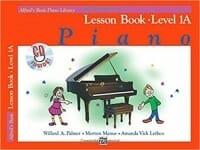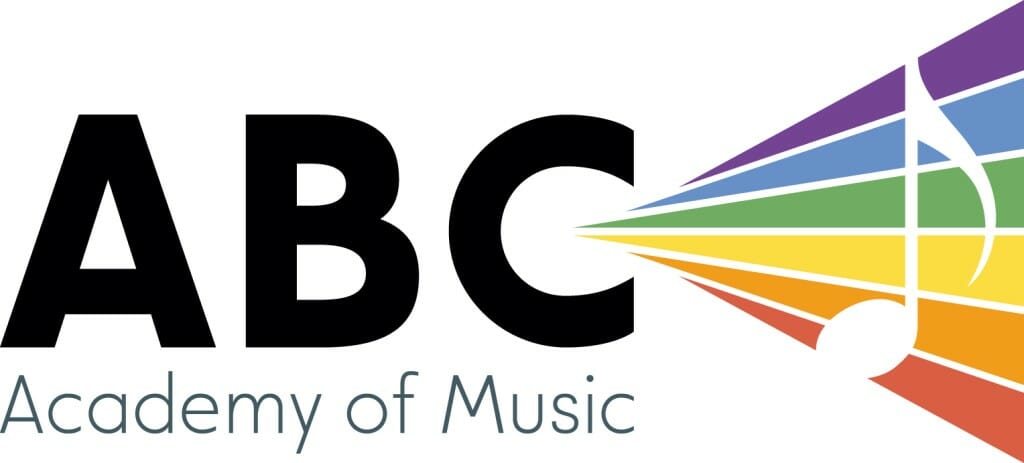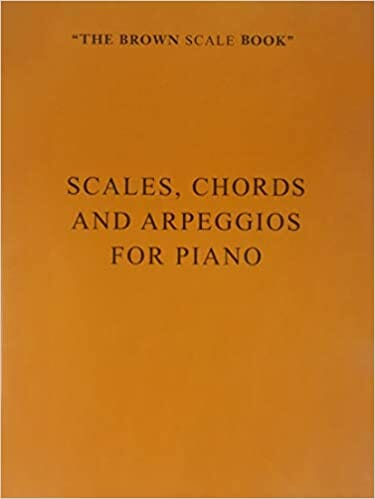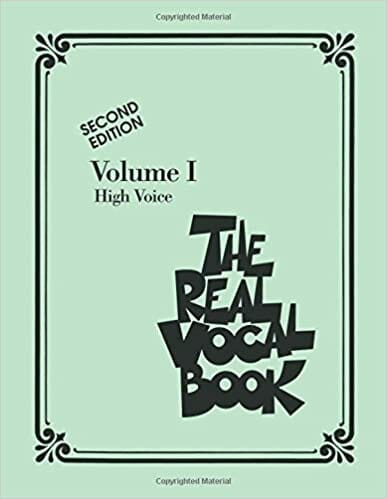B.Mus (Humber) in-progress
Adina is a singer-songwriter based in Toronto completing her Bachelor of Music degree at Humber College in vocal performance. Trained classically in piano since the age of 5, she has branched out into pop and jazz as well.
Vocally she is well-versed in many genres including jazz (she loves to scat!), musical theatre, pop, singer-songwriter, country, R&B, and acappella. She has 7 years of choir experience in both chamber and jazz styles. Adina has been writing and singing original songs since the age of 12, and has two singles as well as an EP out on all platforms under the artist name Adina V.
She has performed all across southern Ontario singing with the Toronto All-Star Big Band, as well as at various venues in the GTA with her own jazz duos and trios. As a member of the Cawthra Park Chamber Choir she performed at Roy Thompson Hall with the TSO for two years in a row. At Humber College she is part of the Vocal Jazz Ensemble led by Lisa Martinelli; this group performs advanced repertoire at events like the Ontario Vocal Jazz Festival.
Adina has been teaching music for the past 7 years and loves helping students meet their personal goals while fostering a love of music that lasts forever!
Get to know Adina…Beyond the Bio!
Hobbies: reading, puzzles, video games, painting
Musical Influences: Ella Fitzgerald, Nancy Wilson, Doris Day, Joni Mitchell, Taylor Swift, John Mayer
Favourite Food: Pad Thai
Least favourite food: eggplant
Favourite music: Indie rock and folk
Favourite song: All I Need by Jacob Collier ft. Mahalia & Ty Dolla $ign
Favourite movie: Matilda
Favourite movie music: The Pirates of the Caribbean theme
Favourite Musical: Dear Evan Hansen or The Last Five Years
Best Quote from your teacher: “It’s an amazing and wonderful experience to be able to be intentional about, in the moment, making music”
Favourite Quote: “Even as we are, we are becoming”
Favourite Book: The Girl With the Dragon Tattoo trilogy – Stieg Larsson
Best thing about teaching at ABC: Sharing and fostering a love of music with students of all ages
Latest Homework from Adina
Is Adina Your Teacher?
Sign up now to get your weekly assignments delivered, and never lose your homework sheet again!
Sunday, April 11, 2021
Sahil
Recommended minutes to practice: 15 minutes a day
What to practice: Beyblade Burst Evolution, “Ya Ya Ya” warmup, Night Begins to Shine
How to practice it most effectively: In Beyblade Burst Evolution, we learned about sharps (which will be the black key up from the letter name we use). The best fingering to use is RH finger 1 on B to start, then crossing over just for a second with finger 2 to A#, then back to B with 1, and finally finger 5 on the F#. The first three times through the chorus we do this pattern 3x then walk down to E-D#-C#-C#-C#-B using fingers 4-3-2-1. The last time through the chorus after the 3x pattern is a higher B, then down to G# (the middle of the group of 3 black keys). Remember, this will be from 0:33-0:55 in the video from last week. You can totally start looking at the part before the chorus, which is 0:22-0:33. For the Ya Ya Ya 3-note warmup, it will be the same as last week except we will try to go one position higher and lower to extend the range. See if you can take it up to an A position, then down all the way to a G position. Always play the notes on piano once before trying to sing along! For Night Begins to Shine, please continue singing with the lyric video, and play your guide notes (B for the verses, and E for the choruses) on piano as you sing. Next week we will try starting Baby Shark!
Nathalia
Recommended minutes to practice: 15-20 minutes a day
What to practice: E major scale hands together, Runaround Sue
How to practice it most effectively: In E major, remember that the sharps show up in pairs (F#, G# and C#, D#). In Runaround Sue, let’s put the B section (bars 9 to 16) hands together as well – be extra careful about when the hands play at the same time, and take your time getting both of them in position before playing. RH please use FACE in the space to help you find your intervals. In bars 8 and 24 don’t forget LH’s staccatos – these will make the piece feel bouncy and fun. As the A sections are getting more and more comfortable, practice looking ahead and prepping LH while RH has its eighth note patterns.
Sina
Recommended minutes to practice: 10 minutes a day
What to practice: C position warmup, Thumbs on C warmup, Merrily We Roll Along and O’er the Deep Blue Sea
How to practice it most effectively: For the two warmups, do your best to lift each finger after the next one plays so the notes can sound one at a time, instead of keeping all of them pressed which will result in a blurry/muddy sound. The same technique goes for your songs. Merrily We Roll Along and O’er the Deep Blue Sea are meant to be played as one complete song, with LH starting and RH finishing. Please remember that finger 2 is your pointer, and 4 is your ring finger. Do your best to count “1-2-3-4” out loud while you play. Quarter notes will hold for one count, half notes for two counts, and whole notes for four counts.
Tuesday, April 13th, 2021
Anaya
Recommended minutes to practice: 10 minutes a day
What to practice: Rain, Rain, Mrs. Murphy’s House, and fixing up #5 on page 37 (needs one note per each line/space)
How to practice it most effectively: In both Rain, Rain, and Mrs. Murphy’s House, it’s a good idea to point/follow along on the page with your RH (right hand) while LH (left hand) is playing. Speak the letter names out loud as you play them! Especially in Mrs. Murphy’s House, pay close attention to which direction notes are moving in.
Saskia
Recommended minutes to practice: 10-15 minutes a day
What to practice: Two “na, na” warmups (3-note and 1-note), Dynamite karaoke, and Do, a Deer (with verse)
How to practice it most effectively: For the warmups, the first is our 3-note “na, na, na” warmup starting on C4. Only play yourself the first note of the exercise as you take it up. Remember that the top note repeats (so when starting on C, notes are C-D-E, E-D-C). The second warmup is the “n-ah-n-ah-n-ah” opening from an “n” to the “ah” three times all on the same note. The idea is to keep the same nasal resonance with both the closed and open part of the exercise. For Dynamite, you are totally ready to sing just with the karaoke version – keep working on your diction/pronunciation through the fast verse sections. At all times where there is a slight break in the stream of lyrics, make sure you’re getting a full breath in; this is especially important before the “shining through the city…” phrase, where we need to transition to our head voice so we don’t strain. The word “little” in that lyric is the best place to switch. Please continue singing Do, a Deer with the YouTube video for next class.
Gianna
Recommended minutes to practice: 15 minutes a day
What to practice: Scale and Skip vocal warmups, Shake it Off, Life is an Adventure, listen to My Favourite Things lyric video on YouTube (https://www.youtube.com/watch?v=kPfgGkyUzEk)
How to practice it most effectively: For both the C and G major scale warmups, use the “na” syllable. For the skips warmup, let’s do it in C position, then F position, then low G position so we can hit all parts of our range. Just use the vowel “ah” for this warmup. In Shake it Off, keep using that A above middle C as your guide note for the chorus. Remember that the prechorus is just as high in your range as the chorus, and we need to enunciate the ends of words so lyrics don’t accidentally sound like something else! Here is the Life is an Adventure lyrics and notes:
Bb Bb Ab Ab Bb, Bb Bb Ab Ab Bb
The music’s playing, my head is shaking
G G F Eb F F Eb
What is going to happen next?
G G F Eb Eb F, G G F Eb Eb F
Life is an adventure, life is an adventure
G G F Eb F F Eb
What is going to happen next?
Bb Bb Bb G G F Eb F Eb
Life is like walking through the jungle
Bb Bb Bb G F Eb F
Life is like climbing a tree
Bb Bb C Bb G G F Eb F F Eb
You never know what is going to happen next
Bb Bb C Bb G F Eb F Eb F Eb
You never know what’s going to hit you or me
Ken
Recommended minutes to practice: 15-20 minutes a day
What to practice: B major scale (LH only), Changing Moods, The Queen’s Royal Entrance, Peter Pan’s Flight
How to practice it most effectively: In B major, LH uses fingers 4-3-2-1-4-3-2-1. Changing moods is a great warmup song; try your best to really line up the notes in both hands. The Queen’s Royal Entrance will be our recital piece – it is already very solid, just don’t rush or else the eighth note timing in the second page will be way too quick! For Peter Pan’s Flight, please do all the legatos! You can play the A-C# eighth notes faster so that quarter notes don’t feel too slow. This song is in 3/4 time, so feel the 1+2+3+ counting in your head while you play.
Steve
Recommended minutes to practice: 10-15 minutes a day
What to practice: Chromatic scale (hands separately), Our Detective Agency, Storms on Saturn
How to practice it most effectively: For the chromatic scale, start on middle C and go 2 octaves up for RH, and 2 octaves down for LH. Our Detective Agency is sounding very strong! Focus on the dynamic contrast between bars 3-4 and 5-6, as well as the legato into staccato articulation in bars 7-8 for RH, and 9 for LH. Storms on Saturn uses the whole tone scale; once notes feel comfortable use the pedal in this piece to make it sound even more space-like.
Gabe
Recommended minutes to practice: 15-20 minutes a day
What to practice: Porcupine Dance, Egyptian Ballet Dance, Habanera
How to practice it most effectively: For the Porcupine Dance, go one hand at a time, noticing how every bar is a slight shift in position. RH only ever goes between C, D, and B positions, and LH only ever goes between E, F, and D positions. Use Every Good Boy Deserves Fudge and FACE in the space to figure out notes on the treble staff you. Please watch out for the few bars that have only 3 notes instead of the usual 4. Egyptian Ballet Dance is a review piece – for now please do your 1-2-3-4 counting out loud while you play. Continue to do your best with Habanera, one hand at a time.
Isaac
Recommended minutes to practice: 15 minutes a day
What to practice: Porcupine Dance, Blinky the Robot
How to practice it most effectively: For the Porcupine Dance, try playing it with the metronome from time to time; start at 188 and gradually speed it up. The goal is 216. Also, please add in the crescendo in the last line. Blinky the Robot is really coming along! We are ready to play the whole form through (so including the D.S. al coda). When playing the staccatos, keep your wrist nice and bouncy. Don’t forget that in bars 10 and 16 the E chord is also staccato! Next week we will pick a new piece. Our bass clef sayings that we were talking about today are Good Birds Don’t Fly Away for the lines, and All Cows Eat Grass for the spaces.
Wednesday, June 9th, 2021
Diya
Recommended minutes to practice: 15-20 minutes a day
What to practice: Best Day of My Life, Never Enough, Mexican Jumping Beans, Haunted Mouse
How to practice it most effectively: When doing your warmups, feel free to use all the different vowels! For Best Day of My Life, you can sing the “hoo, hoo” parts since these are a catchy, important part of the song. When we sing “Whoa-o-o-o”, please make sure the O vowel is open and not an “Oh-ooh” sound. In the bridge section, the melody is the middle part; the highest thing your ears hear is actually a harmony. Please continue to practice Never Enough. For Mexican Jumping Beans, use your wrist to make staccatos even shorter/crisper. Remember, this doesn’t mean we have to play fast! For Haunted Mouse, start with the first 2 lines hands together – you can read ahead if you feel comfortable. LH is doing ties – this means you don’t replay the second note in the group. RH, careful with your mix of staccatos versus legatos.
Marco
Recommended minutes to practice: 15 minutes a day
What to practice: This is Not Jingle Bells (review song), Kites in the Sky, A Mixed-Up Song
How to practice it most effectively: For This is Not Jingle Bells, keep playing it as as warmup song so it feels really comfortable and flows smoothly. Kites in the Sky is a very legato song (including the extra long bar 17!). Whenever LH crosses over, it’s not a whole new position; you can just use the written fingerings. If you’re ever unsure about a note, use FACE in the space to help. In bar 17 all notes are moving in steps, and the hands pass them on to each other. For A Mixed-Up Song we are playing with 4ths! 4ths go from space to line or line to space. LH please be extra careful reading your letters on the bass clef – C, E, and G are space notes while D and F are line notes.
Oliver
Recommended minutes to practice: 15 minutes a day
What to practice: Firefly, Little Green Frog
How to practice it most effectively: For Firefly, let’s add the second page of the song in – there are times where the melodic ideas repeat. Lots of skips in this song, so keep it up looking for the space-space, line-line movement! As always, if you’re unsure of a note you can use your treble and bass clef sayings. For Little Green Frog, make sure you’re staying in position (this one is thumbs sharing C position) for the whole song. Please do the staccatos by letting your wrist be nice and bouncy, and note the couple of times we have repeated middle Cs.
Alice
Recommended minutes to practice: 15 minutes a day
What to practice: Let Me Love You, My Favourite Things, All My Friends
How to practice it most effectively: For Let Me Love You, give yourself your starting note (G above middle C) before starting the song – you will be singing an octave above Justin in verse 1, but in verse 2 he goes up to your notes! Feel free to hum the little instrumental melody whenever there is the breakdown. Please do some more listening and following along with lyrics for My Favourite Things – there are many words to get comfortable with (although the good news is that the melody is pretty repetitive). For All My Friends, we have tied quarter notes from beat 4 of one bar to beat 1 of the next bar. We wrote down the counting, so if you’d like to you can count out loud as you play.
Linda
Recommended minutes to practice: 20 minutes a day
What to practice: Pyrenese Melody, Cool Groove, and I’ve Got You Under My Skin
How to practice it most effectively: For Pyrenese Melody, we discussed the rhythm in bar 5 and how it lines up with the 1e+a, 2e+a counts; you can isolate this bar and say counting out loud a few times to solidify it. Please make sure the eighth notes in bars 9 and 11 are nice and even, even when doing the down-up articulation. For the new song, Cool Groove, let’s go hands separately for now, especially focusing on the RH rhythms where there is eighth-quarter-eighth. Please keep practicing I’ve Got You Under My Skin; we will play it next week.
Emet
Recommended minutes to practice: 20-25 minutes a day
What to practice: Walk Don’t Run, Rock Around the Clock, Haunted House
How to practice it most effectively: For Walk, Don’t Run, please isolate bars 7-9 while saying the counting a few times – eventually we want bar 9 (and again in bar 17) to become the same quick speed as the rest of the piece. Be careful with the intro eighth-eighth-quarter rhythms. For Rock Around the Clock, we will be swinging the eighth note pairs (this could include rests!); the first note in the pair is longer than the second. RH please play the first page, feeling out the rhythm; LH can play the first page and the second page. On the second page LH is doing what’s called a walking bassline, which typically uses triads and is pretty repetitive. Please continue to practice Haunted House – we can start with this one next week.
Kollel
Recommended minutes to practice: 20-25 minutes a day
What to practice: B major triads (hands together), The Entertainer, The Black Pony
How to practice it most effectively: For the triads, please take note of the 3 keys you’ll be using and commit those to memory before starting. As always, remember which inversions use finger 2 for each hand. For The Entertainer, try the first page hands together! LH, you can think about when you’re playing inversions or parts of C, G, and F triads. Bar 18 specifically goes F major to F minor, with only one note changing. Be careful with all the syncopations between the hands. For The Black Pony, please count “1e+a” on the quarter rest just before the ending. The last detail to add is making those staccatos extra crisp – remember, staccato doesn’t mean fast, it just means short; you can absolutely play slow and still use staccatos.
Preferred Books for Adina’s Students
Click to buy them here, and they’ll come right to your house! What could be easier?
Alfred's Basic Piano Library Lesson Book 1A

Alfred's Adult Basic All-In-One
Alfred’s Basic Adult All-in-One Course is designed for use with a piano instructor for the beginning student looking for a truly complete piano course. It is a greatly expanded version of Alfred’s Basic Adult Piano Course that will include lesson, theory, and technique in a convenient, “all-in-one” format. This comprehensive course adds such features as isometric hand exercises, finger strengthening drills, and written assignments that reinforce each lesson’s concepts. There is a smooth, logical progression between each lesson, a thorough explanation of chord theory and playing styles, and outstanding extra songs, including folk, classical, and contemporary selections.
The Brown Scale Book
This essential resource includes all major and minor scales, triads, arpeggios, dominant sevenths, and chromatic scales organized by key. A favorite for decades, The Brown Scale Book belongs in every student’s library.
The Real Vocal Book
The Real Vocal Book has many of the selections from Volumes 1 and 2 of the instrumental Real Books, but now with complete lyrics added to the pre-existing melody line. This edition features 300 essential songs arranged for low voice, including: Alfie * All of Me * Autumn Leaves * Bewitched * Bluesette * Don’t Get Around Much Anymore * Fever * Georgia on My Mind * Misty * Moon River * My Funny Valentine * Satin Doll * and more. Looking for a particular song? Check out the Real Book Songfinder here.









